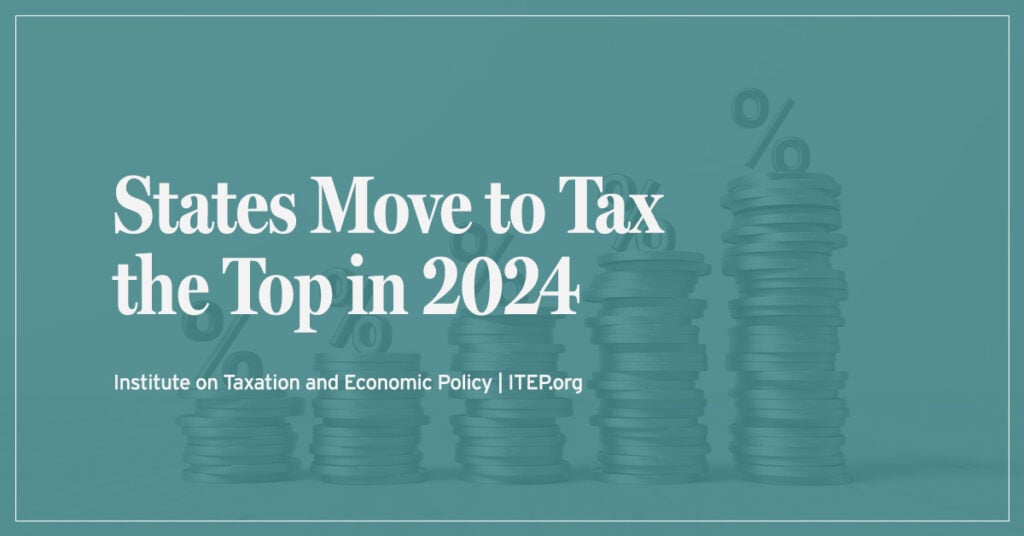
Hawaii
Hawai’i Worldwide Combined Reporting Bill Cites ITEP Data
February 25, 2025
House Bill 116 in this year’s state legislative session in Hawai’i cites ITEP data on the revenue potential of worldwide combined reporting (WWCR). (For more on WWCR, read our recent report here.)
Hawai’i Appleseed: How a Second Trump Presidency Could Impact the Pocket Books of Hawaiʻi’s Working Families
December 22, 2024
With President-elect Trump preparing to return to the White House in 2025, it’s worth examining how his proposed policies could impact Hawaiʻi’s economy, tax system and the household budgets of local working families. Read more.
ITEP’s Miles Trinidad Testifies Against Weakening Hawai’i’s Estate Tax
April 9, 2024
HB 2653 would only exacerbate the regressive nature of Hawai’i’s state and local tax system and compound the preferential treatment of income derived from wealth.

These forward-thinking states are demonstrating the wide variety of options for policymakers who want to raise more from the wealthiest people, rein in corporate tax avoidance, create fair tax codes and build strong communities.
Hawai’i Appleseed Center for Law and Economic Justice: Rebalance Hawaii’s Upside-Down Tax Code to Achieve Prosperity for All
January 24, 2024
Our state tax code makes the situation worse. A comprehensive analysis of state and local taxes across the country shows that Hawaii is the third-worst state when it comes to taxing struggling working families. Households in the lowest income category pay an effective tax rate of 14.1%, while the richest 1% pay an effective tax rate of 10.1%
Hawaiʻi Budget & Policy Center: Closing the Capital Gains Loophole
February 1, 2023
Eliminating the preferential tax treatment of capital gains income will increase tax fairness and help fund our future. Read more.
Hawai’i Budget & Policy Center: Expanding Economic Opportunity with the Hawai’i EITC
February 7, 2022
Hawai’i’s working families continue to struggle with the nation’s highest gap between median earnings and the cost of living, and this difficult reality has only been made harsher by the COVID-19 pandemic. In fact, more than a third of Hawai’i households had at least some difficulty paying for their monthly expenses in December of 2021. […]
Hawai’i Budget and Policy Center: Hawai’i’s Earned Income Tax Credit: Next Steps
February 20, 2020
In 2017, Hawaiʻi passed legislation to create a state EITC.11 The new law allowed qualified taxpayers to claim a state tax credit beginning in 2018. The state tax credit amounts to 20 percent of the federal EITC but, unlike its federal counterpart, Hawaiʻi’s tax credit is not refundable. That is, if the filer owes less […]
Hawai’i Public Radio: Corporate Tax Loophole Costs Hawaii $38 Million Annually
February 20, 2019
Hawaii lawmakers are missing out on millions in potential tax revenue. That is the conclusion of a report from the Institute on Taxation and Economic Policy. The ITEP found that a loophole in Hawaii’s tax code allows multinational corporations to avoid paying state corporate income taxes, resulting in a loss of $38 million in revenue annually. Read […]
